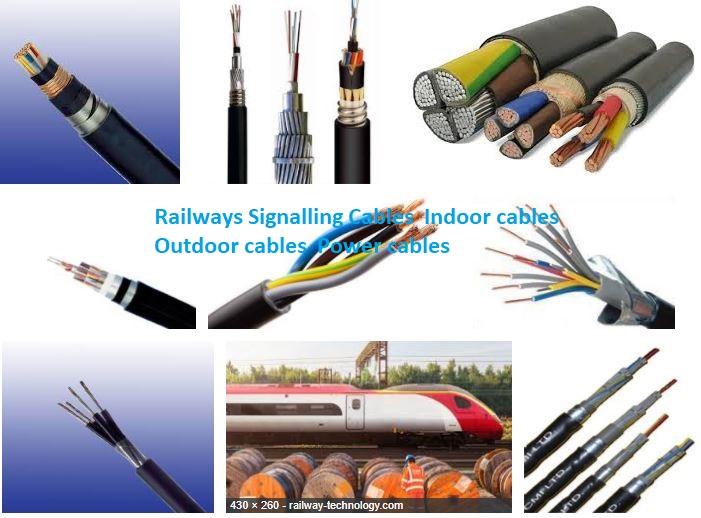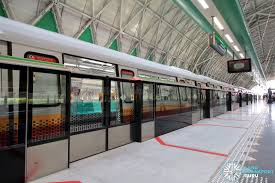Railways Signalling Cables Indoor cables Outdoor cables Power cables
What Are Cables?
A cable is a unit that contains more than one insulated conductor bunched into a compact form by providing mechanical protection and electrical insulation. PVC insulated, PVC sheathed and armoured signalling cables are used for carrying signalling circuits. Conductors are of copper and of approved size. Cables are classified as „INDOOR‟ cables and „OUTDOOR‟ cables.
What is the use of Indoor cables?
Used for internal wiring of signalling circuits with copper conductor, PVC insulated without armour. Indoor cables are normally in size 60 core, 40 core, 24 core, 20 core with conductor size 0.6 mm dia. or 60 core, 40 core, 24 core & 16 core of 1.0 mm conductor dia. size.
Outdoor cable
These are classified as Main cable, Tail cable, Power cable and Quad cable as per circuit connection requirement. Main and Tail cables are available in 4 core, 6 core, 8 core, 12 core, 20 core, 24 core, and 30 core, with conductor size 1.5 sq. mm area. 1.5 sq mm (Copper conductor) 2 core size cables are used for track circuits (Feed end & Relay end) Numbering is generally started from outermost layer i.e., Starting from Blue and ends with Yellow.
Power cable
Used as BUS BAR for power supply from relay room to location boxes. Sizes are 10 sq mm Aluminum single strand 2 core cable. 25 sq mm Aluminum single strand / multi-strand 2 core.
Quad cable
Used for Axle counter circuits, Block line circuits. There are of 6 or 4 quad cable (1 quad = 4 conductors arranged in 2 pairs)
Testing of signalling cables
Periodicity of the Main cable Once in a year, Tail cable Once in six months, Life of signaling cable 30 years, 500 volts DC Megger to be used for testing of the cable. The insulation resistance should not be less than 5 Megohms / Km in dry weather. (For 500 Mts. 10 Meg ohms, 250 Mts. 20 Meg ohms)
Electrical Key Transmitter
The electrical key transmitter is used for the purpose of controlling a signal apparatus such as points, LC gates & signals, etc by SM by retaining the key of the controlled apparatus (which is normally locked) and issuing the same key for releasing the apparatus when required.
Under this system, the working of fixed equipment is locked by means of a mechanical key which is electrically locked in the EKT. For extracting the key from the EKT, a pair of EKTS is required to be connected in series, one at the function end and the other at the controlling end and requires physical co-operation from both end operators.
The EKT keys are so designed that they enter only the instrument meant for the specific key and can not enter any other instrument of its kind. The EKTs keys are provided with the provision of sealing.
Railways Signalling Cables Indoor cables Outdoor cables Power cables
Keys out: All contacts open
Key in & pressed to right side : Contacts 5 & 4; 3 & 1 make
Key in : Contacts 5 & 4; 3& 2 make
Electrical parameters:
Resistance of coil – 12.5 ohms to 15 ohms
Rated voltage – 12 V DC
Working current 150 mA to 200 Ma
Minimum Voltage 6V DC
Railways Signalling Cables Indoor cables Outdoor cables Power cables Visit Here:- http://rdso.indianrailways.gov.in
Types of cables used in Indian Railway
Laying of cables with different voltage rating in the same duct
Railway signalling cables specifications
Cable crossing under Railway track
Loop resistance of signalling cable
RDSO specification for signalling cables




I also interested for signalling system.
IN THIS WEBSITE U LEARN SO MUCH, TUCH WITH THIS SITE
20 core × 0.6 mm indoor cable
please provide details on selection of cable size based on available inputs
ok
Please Tell me What is The Digging size in depth and width Cable Laying in signaling which are comes from Cabin to go through AC Box And Signals,
And which cable is Used in that case.